Depending on your level of familiarity with the story of the global lockdowns of spring 2020, you may or may not have heard of Tomás Pueyo. Pueyo is an MBA and thinkfluencer who came to sudden fame for his March 10, 2020, article Coronavirus: Why You Must Act Now, in which he implored political leaders around the world to emulate China’s “success” against the coronavirus by implementing strict lockdowns.
Pueyo had no relevant credentials or prior interest in epidemiology—and there was little to indicate where he’d gotten his ideas about virus containment—but, strange as it may seem, Pueyo’s article soon became one of the most-shared articles of the entire year, and it was one of the most influential causes of the global lockdowns of spring 2020, especially in Europe. Now, having been relatively quiet for the past three years, Pueyo has returned with a new viral thread purporting to debunk the recent Cochrane review concluding that mask mandates made “little to no difference” in preventing COVID or flu.
As one academic at Sheffield University summarized Pueyo’s story in 2020:
The experts are back in fashion. So the story went during the early stages of the COVID-19 crisis… This turned out to be an unsustainable position… Pueyo made no claims to special expertise or relevant credentials, and a glance at his Medium profile showed no previous interest in epidemiology, but rather a range of posts with titles such as What the Rise of Skywalker Can Teach About Storytelling and What I Learned Building a Horoscope That Blew Up on Facebook. This all seemed like a poor fit for the new age of expert deference that we were supposed to be experiencing, but… [Coronavirus: Why You Must Act Now] received a stunning 40 million views in the first nine days since publication and has been translated into over 40 languages.
In his 2020 article, Pueyo urged leaders to adopt methods of virus containment modeled on China’s.
The total number of cases grew exponentially until China contained it. But then, it leaked outside, and now it’s a pandemic that nobody can stop.
Pueyo’s article went viral at an astonishing pace and was shared by many influencers and celebrities. But reactions were mixed. Many top commenters expressed shock at Pueyo’s lack of qualifications, and accused him of being a “liar and a fraud.”
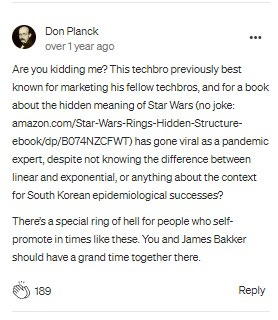

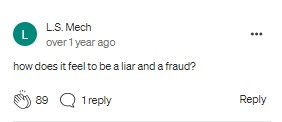

Others questioned how someone with no experience or previous interest in epidemiology was suddenly one of the most influential voices in a public health emergency.
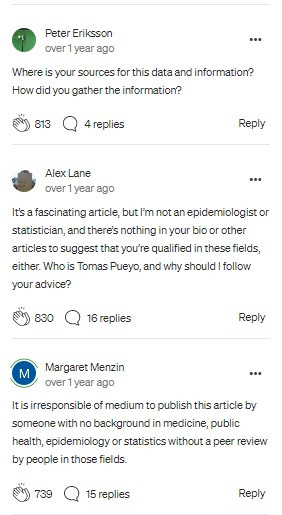

When asked about his credentials, Pueyo responded: “You might have also noticed my two MSc and the several viral applications I built that gathered millions of users—with very similar dynamics”—invoking his experience with viral media applications as a qualification to discuss the spread of viruses in the biological sense.
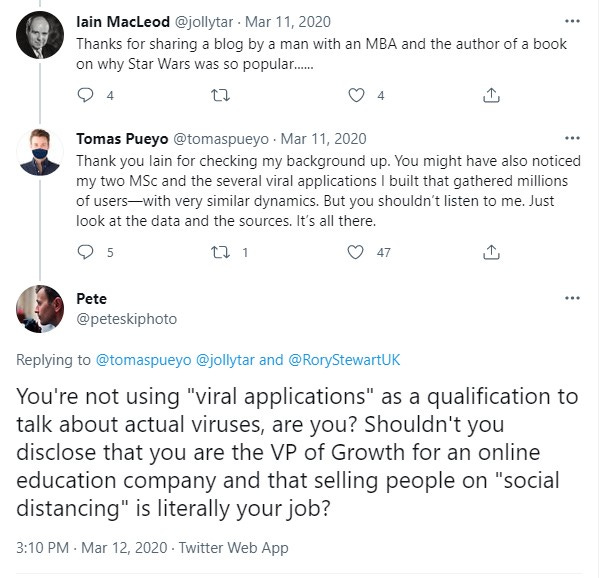

Undeterred, within days, Pueyo had posted links to high-quality translations of his article in dozens of languages. Pueyo’s 6,000-word article had been so popular, so the story went, that readers had, within days, produced immaculate translations in nearly every language.
Pueyo then went on tour advising state legislators and national leaders on implementing lockdowns.
Pueyo’s article contained many oddities. It several times referred to the coronavirus as a “pandemic,” but as of March 10, the World Health Organization had not yet declared a pandemic, and per the article, confirmed cases accounted for less than 0.0015 percent of the world’s population. In the article, Pueyo implored political leaders:
But in 2–4 weeks, when the entire world is in lockdown, when the few precious days of social distancing you will have enabled will have saved lives, people won’t criticize you anymore: They will thank you for making the right decision.
Not only was the coronavirus not yet a pandemic, but as of March 10 there were fewer than 200 confirmed cases in the entire developing world outside China—fewer than one case per 20 million people. There was no good reason to believe the entire world would be in lockdown in two to four weeks, given the policy had no precedent in the modern Western world.
Pueyo’s article contained a trendy GIF purporting to show how China’s lockdown measures could be used to “flatten the curve,” which many influencers included when sharing the article.
Days later, CGTN, the Chinese Communist Party’s largest global propaganda network, shared much the same graphic in a news segment encouraging the global adoption of China’s lockdown policies.
On March 19, 2020, Pueyo posted another Medium article titled The Hammer and Dance, explaining the strategy Pueyo named “the Hammer”—quick, aggressive lockdowns when outbreaks occur—followed by “the Dance”—tracing, surveillance, and quarantine measures.
Three days after Pueyo published The Hammer and Dance, a strategy paper by the German government (dubbed “the Panic Paper”) was secretly distributed to members of parliament and certain media outlets—playing a major role in Germany’s lockdown.
Despite being published just three days after Pueyo’s article, the German Panic Paper relied heavily on Pueyo’s work, discussing the “Hammer and Dance.” However, the term “Hammer and Dance” had no history in epidemiology—Tomas Pueyo had invented it in his March 19 article.
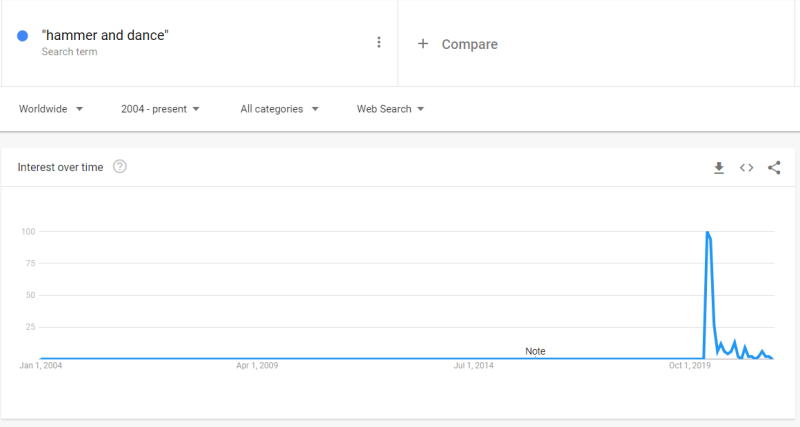

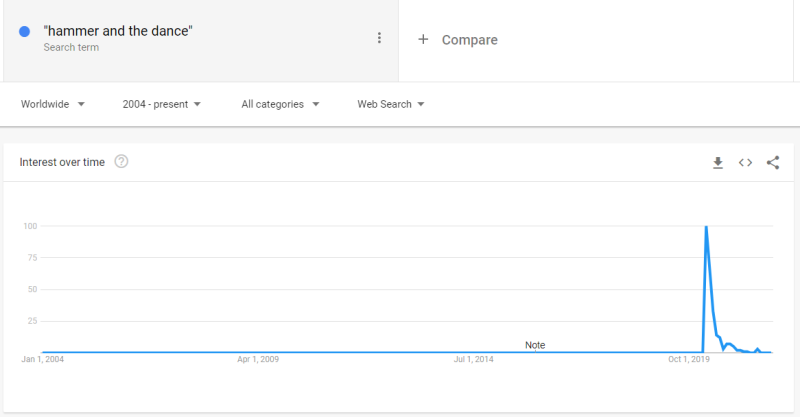

One of the German Panic Paper’s authors was Otto Kölbl, who had no background in epidemiology or public health, but taught for many years in China and ran a blog in which he’d described Hong Kong as “parasitic” and praised the CCP’s exemplary governance of Tibet.
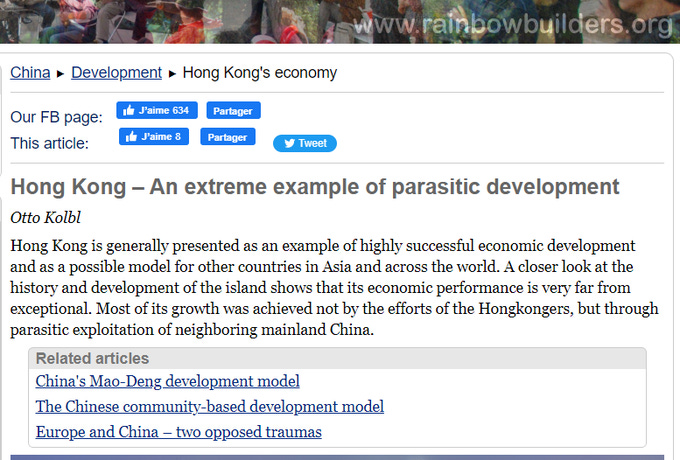

Another author of the Panic Paper, Maximilian Mayer, also had no epidemiology or health background but spent years working at University of Nottingham in Ningbo China, Tongji University in Shanghai, and Renmin University Beijing.
Later, hundreds of pages of emails containing communications leading up to the Panic Paper were obtained via FOIA. In one email, Mayer wrote that he was delivering “secret” information about the Chinese response, and in another specifically recommended: “We suggest the motto ‘collectively distanced.’” Of the 210 pages of emails leading to the German Panic Paper, 118 were blacked out. The emails contained frequent references of China, but nearly all of these are were redacted. The stated reason: “May have adverse effects on international relations.”
To this day, it remains unclear where Pueyo got the ideas for virus containment for his 2020 articles. To some degree, Pueyo’s ideas mirrored those of major lockdown proponents like Imperial College Professor Neil Ferguson—architect of the wildly-inaccurate COVID models that instigated lockdowns across the free world—who’d already endorsed global lockdown measures. Yet outside of a niche epidemiology community, these ideas were far from well-known. For the most part, it wasn’t until Pueyo’s articles that these ideas for strict virus containment measures reached the mainstream.
Over the ensuing years, the strict lockdowns of 2020 proved to be one of the greatest policy catastrophes of the past century. As the Wall Street Journal put it: “The pandemic lockdowns were a policy blunder for the ages, and the economic, social and health consequences are still playing out.” And as the UK’s Daily Telegraph wrote: “Basket-case Britain is the definitive proof lockdown was an epic mistake.” Even the center-left London Times expressed regrets: “I totally backed the lockdown (and quite enjoyed it). But was I just a mug?”
And even the New York Times quietly acknowledged a study showing that the response to COVID had led to over 170,000 excess deaths among young Americans which were not attributable to the virus: “All of this suggests that large and sustained changes in living habits designed to avoid a single virus had not only ‘economic’ opportunity costs, but also cost a shockingly large number of young lives.”
Even these dismal assessments may be a vast understatement. Ultimately, the lockdowns and restrictions imposed by governments in response to COVID-19 killed millions, pushed tens of millions into extreme poverty, strained the mental health of billions, and transferred trillions of dollars in wealth from the world’s poorest to the very richest, all while failing to have any meaningful effect on the spread of the coronavirus.
Since his pro-lockdown activism in 2020, Pueyo had been relatively quiet on the subject of COVID measures. Pueyo spoke in support of “Zero Covid,” but generally focused on sometimes-viral posts on other topics. One could speculate as to the meaning of this silence. Perhaps he’d simply been mistaken, or even harbored some regrets?
But now, Pueyo has roared back onto the scene with a new viral thread purporting to debunk the recent Cochrane review which concluded that mask mandates made “little to no difference” in preventing COVID or flu, and attacking the reporting of the Cochrane review by the New York Times and others.
Like his 2020 Medium articles, Pueyo’s thread has been shared widely by celebrities, influencers, and even scientists.
As the New York Times and others have noted, Cochrane reviews are considered the gold standard of systematic reviews. Yet aside from these many errors, those gushing over Pueyo’s thread are missing the most glaring point of all. Even if they can pretend to poke some methodological holes in the Cochrane review, that still leaves them with what they had before: precisely zero RCTs showing that mask mandates had any significant effect in slowing the spread of COVID.
Yet the most illuminating point of all may be in what this new thread tells us about Pueyo’s intentions. In light of the unimaginable devastation wrought by the lockdowns in which his 2020 articles played an outsized role, one may have thought that Pueyo might harbor some reservations about weighing into matters of public policy outside his field. Pueyo’s embarrassing attempt to cast shade on Cochrane and the New York Times should tell us all we need to know: Despite the countless millions of lives destroyed, one of the chief instigators of global lockdowns appears to feel absolutely no remorse about his actions.
Reposted from the author’s Substack
Join the conversation:


Published under a Creative Commons Attribution 4.0 International License
For reprints, please set the canonical link back to the original Brownstone Institute Article and Author.









